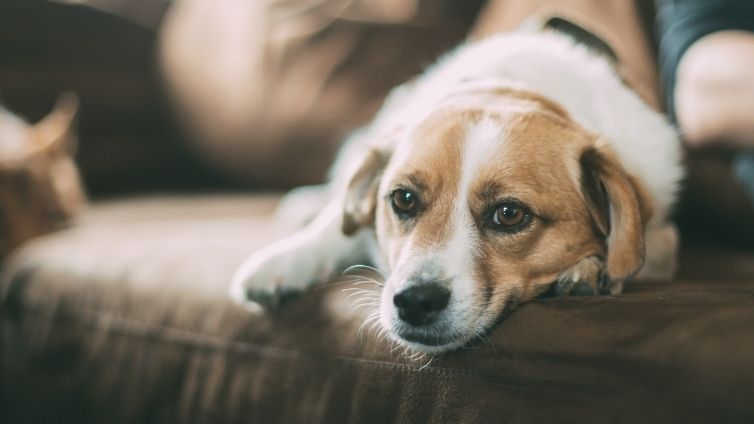If you own a dog, you must know that dogs love spending time outdoors while being active.
Sometimes you may even ask yourself “Did my dog had enough exercise?” or “Should my dog exercise more?” but the trick here is that there isn’t a right and wrong answer because it all depends on your dog’s breed, age, and health.
Do you know how much exercise does a dog needs every day? There are a few guidelines you can follow to make sure that your dog is getting all the exercise that he actually needs.
How Much Exercise Does My Dog Need?
Just like with humans, the amount of exercise that is ‘enough’ for dogs depends on the dog’s age, health, and breed. These are just rough parameters, because even within a breed, the needs may vary.
For example, an energetic Golden Retriever eight-years-old could need more exercise than a calm and gentle three-year-old Golden Retriever.
Also, geriatric dogs still need regular walks, just shorter ones. Simply said, a leashed walk around the block just isn’t going to cut it, for any breed.
In general, most dogs need 30 to 60 minutes of physical activity per day.
As expected, your dog’s physical needs will slow down as he gets older, and you should be ready for that period.
Here are some general guidelines for getting your dog enough exercise:
- Active dog breeds need a minimum of 30 minutes of exercise per day.
- Toy and small dog breeds cannot stay indoors all the time and expect them to be healthy. So, with these breeds, you should have regular walks. They are prone to obesity, so they usually need more activity that they usually get.
- During cold and harsh winters or any other extreme weather, you should take the dog out to do his business, and keep him entertained indoors. If you have stairs, use them as a tool for dog’s sport.
- Make exercises interesting and challenging. Keep both dog’s mind and body active. Explore a new hiking trail, or go for a weekly swim.
Remember: A tired dog is a good dog.
Here is a shortlist that may serve you as a rough guide for minimum exercise that your dog may need per day.
This is a rough guide, so make sure that you speak with your veterinarians about dog’s precise exercise needs.
Each dog is an individual and may need a specific amount of exercise.
Exercising Your Dog At Different Ages
Your dog won’t have the same exercise needs as a puppy and as an adult dog.
So, based on the dog’s age, you may expect different amounts of exercise.
Exercise needs are similar to humans: toddlers and people in their seventies don’t have the same need for walking or running, and that should be respected.
So, don’t force your puppy to go for a long walk or hike, when he isn’t ready for that. Make sure that you are well-informed on how to exercise your dog at different life stages.
How Much Daily Exercise Does a Puppy Need?

When you take care of a puppy, you actually get to learn a lot about yourself.
Puppies will make you question your patience level, how you react to unplanned situations, and how calm your temper is.
Make sure that you know for sure what you are getting into when you get a dog. When vaccination is done, puppies get to explore the world 24/7 and no force can stop them in learning new things.
Puppies will madly race around the house, jumping into your lap, and chasing with other pets if you have a multi-pet household.
Puppies are full of energy, and they usually have more energy than adult dogs. They require more exercise is short bursts.
With puppies, you should avoid really long walks, because they are growing its much safer to have several short walks or play sessions. You don’t want to hurt the puppy’s developing body.
Every puppy is different, so make sure that you talk with your breeder or your veterinarian to learn how much activity is appropriate for your puppy.
Don’t forget that proper exercise is a great way to socialize your new dog.
How Much Exercise Does an Adult Dog Need?

Your dog’s breed will heavily influence the level of physical activity your dog needs.
High-energy breeds, such as Borador and Belgian Malinois, require a lot more exercise than low-energy breeds, such as Basset Hound and Pomeranian.
When choosing a puppy, you should take the dog’s breed into account. Unless you lead an active lifestyle, you should avoid having low-energy breeds. Your dog’s health is also important.
If your adult dog has a medical condition, such as hip dysplasia or heart or respiratory issues, talk with your veterinarian about an appropriate exercise routine, that will help him stay active and healthy.
How Much Exercise Does a Senior Dog Need?

Your senior dog will have different needs than when he was a puppy. You must care carefully about your senior dog and provide exercises for senior dogs to keep him healthy and active.
Based on your senior dog condition, you might even restrict her run, but this is something that you should discuss with your veterinarian.
Observe the dog’s behavior to know how much exercise your dog can handle. Exercise provides all dogs with mental stimulation and keeps them active.
Now, you may ask yourself can it harm if you skip an exercise or two. Can the lack of a dog’s exercise and physical activity lead to health problems? Let’s discover.
The Cost Of Not Getting Enough Exercise
Dogs were made to be active. During their history, dogs were bred to be mostly working dogs. That means that they have a specific purpose, and they had specific tasks that kept them busy all day long. Simply said, dogs should be active.
Just like humans, inactive dogs are often overweight dogs, and more prone to various medical issues.
Obesity in pets is a rising problem across the world, and especially in the States.
Obesity leads to a high risk of dog diabetes, respiratory disease, and even heart disease. Plus, obesity can strongly stress joints, tendons, and ligaments.
Signs a Dog May Need More Exercise
Daily exercise needs may vary from dog to dog, but overall they need between 30 minutes to 2 hours of activity per day. However, certain dogs need more exercise.
Some breeds were developed for a more active lifestyle than others. You have probably heard at least once someone saying how their dogs are never tired.
That’s because still haven’t figured out how to exercise their dogs. Therefore, many dog owners often choose to involve their dogs in a training program.
If your dog’s basic needs aren’t being met, not even the best trainer in the world won’t help you. So, how to know whether your dog may need more exercise?
Here are the most common signs that your dog may not be getting enough exercise:
- Destructive behavior
- Excessive barking
- Weight gain
- Rough play
- Depression
- Pulling at the leash
- Pestering or annoying behavior
- Restlessness
Some of these symptoms may also be signs of separation anxiety, so make sure that you talk with your veterinarian.
Tips on Dog Exercise
Having regular walks and a good daily routine is a great start. For some breeds, along walk around the block can be more than enough, while others will demand more time outdoors.
When it comes to exercise it’s important to offer variety every once a while.
Even true couch potatoes love to mix up things a bit. Luckily, there are countless opportunities to exercise your dog in your daily life.
- Hiking. If you love the great outdoors, and your dog loves being active for a long time, hiking seems like a logical choice. Take your dog ion your next adventure to explore new trails. You can also explore new parks or a new city area.
- Swimming. Some dogs are born swimmers, while only a few of them will choose not to jump into the water. Overall, dogs are natural swimmers and swimming is great for them. Regular swimming can be beneficial to dogs with joint problems because it provides low-impact exercise.
- Fetch. This one is basic and always beneficial. Toss a ball into the water, to make your dog run uphill to retrieve a ball. Change toys regularly.
- Dog sports. There are many dog sports to choose from. You and your dog can try a variety of activities. Most frequent dog sports are agility, flyball, obedience, scent work, dock diving, and lure coursing. If your dog is especially keen toward commands and learning, you can try Schutzhund.
Good to know: Be careful when it comes to exercising your dog. If your dog drinks a large amount of water before exercise he might end up throwing up water later on.
What About Indoor Dog Exercises?
Bad weather can mess up your dog’s exercise routine. Rainy days, cold days, as well as hot days can make it difficult to go outside for long periods of time, and may even pose a health risk.
This is why you should think about indoor dog exercises and keep your dog in shape all-year-round.
- Stairs. Running up and down the stairs, a few times per day is great for building muscles. however, this should be a practice only when you can’t go outside. Don’t practice intense stairs chase with short-legged breeds, such as Dachshunds and Pembroke Welsh Corgis.
- Hide-and-Seek. This simple game will provide proper mental stimulation. Plus, it will keep your dog moving.
- Treadmill. A treadmill should always be a supplement of exercise and not a regular activity. This is often used in high-energy breeds. To adjust your dog to a treadmill, you need to train your dog slowly, so he can get used to a treadmill workout. Remember: treadmill workout isn’t a replacement for a walk or a run outside.
- Tug. When played properly, the tag can build muscle and strengthen the human-animal bond. Most dogs enjoy tug, and there are many tug toys available to keep you interested.
The Bottom Line
Of course, if you want to provide your dog all-year-long exercise routine, you can always think about dog sports, as a regular extra activity. Everyday walks are mandatory for a dog of any size.
Dogs use time outdoor to explore the area, engulfed in new scents, and bond with their humans. Make sure to keep exercise time fun and engaging.
Dogs aren’t fans of boring and one-sided games. They prefer diversity and engaging exercise time, so make sure that your dog is happy with his daily and exercise routine.




















